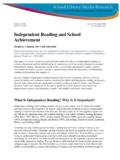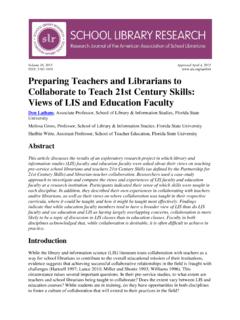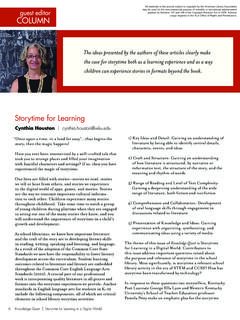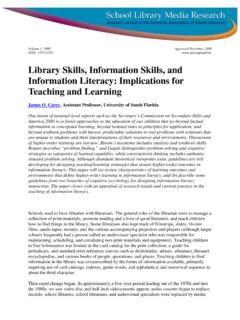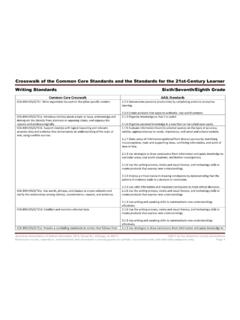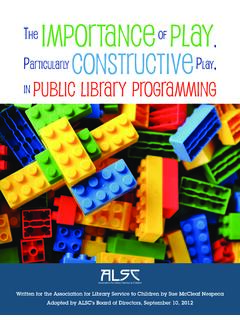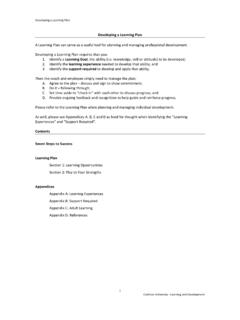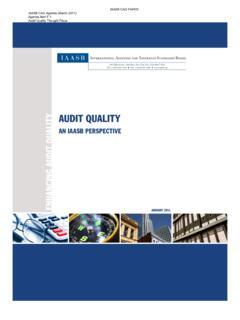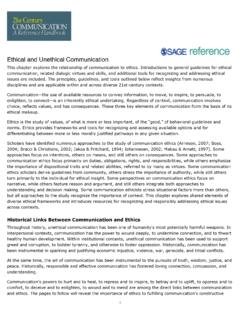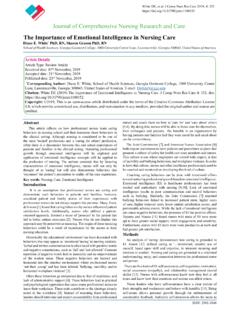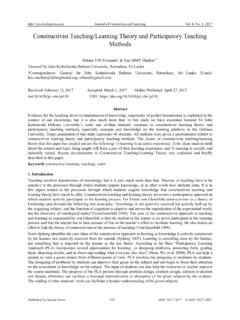Transcription of The Importance of Play, Particularly Constructive Play, in ...
1 The Importance of play , Particularly Constructive play , in Public Library Programming Written for the Association for Library Service to Children by Sue McCleaf Nespeca Adopted by ALSC's Board of Directors, September 10, 2012. Abstract This white paper addresses the Importance of play in the lives of young children. It emphasizes the need for librarians to incorporate periods of play into their library programming because of the direct correlation between play and early literacy skills. Though currently many libraries do include dramatic play in storytime programs, librarians are asked to consider adding periods of Constructive play with blocks and bricks. It concludes by emphasizing the Importance of Constructive play , not only due to its effect on literacy skills and children's future success in reading and writing, but also to increase a library's Science, Technology, Engineering and Mathematics (STEM) educational programming.
2 Background play is vital for early learning. It is not recess or a timeout from learning, rather it IS the way young children learn. play can be defined in many ways, but normally three different kinds of play are delineated: (1.) Object play , also known as exploratory play , from ages 0-2 (2.) Pretend play , also described as imaginative play , or dramatic play , from ages 3-5 and (3.) Social play , including Physical play and Investigative play , from ages 6-8. Young children, from birth through age eight, go through all three stages in play , with each stage building on the one before. (Jones, 2011.). The Association for Library Service to Children (ALSC) and Public Library Association's (PLA) joint project Every Child Ready to Read 2nd edition emphasizes the Importance of play for the development of early literacy skills.
3 play is described as one of the best ways children can learn language and literacy skills. (Every Child Ready to Read , 2011). It is also listed as one of five practices (talking, singing, reading, writing and playing) that are important for parents and caregivers to share regularly with their young children to help them get ready to read. Through play , young children learn about their world. With this knowledge, they can understand books and stories once they begin to read. The first edition of the Every Child Ready to Read project listed six skills necessary for children to successfully learn how to read and write. They included print awareness, letter knowledge, phonological awareness, vocabulary, narrative skills and print motivation, all of which can be learned through play .
4 Unfortunately many parents, and even educators, do not appreciate the relevancy of play and how meaningful it is for children. Instead, there is often an increased demand for academics, both at home and at school. Kindergarten skills are being taught in some preschools, and numerous preschools reduce playtime in favor of forced learning, memorization, and drills. Additionally, parents are bombarded with media messages from the time their children are babies about the need to excel, and the value of certain products or enrichment tools to help their own child do so. Librarians and educators have stressed the Importance of brain research showing the Importance of the first five years of a child's life in synapses formation and brain development.
5 Many parents have construed this to mean that they need to push their young child into the early acquisition of academic skills, engaging them in a wide variety of enrichment activities, many of which are not developmentally appropriate during these early years. Emphasis is placed on rote memorization, electronic toys, and computer or video games. Large periods of free open-ended play and guided play often seem unimportant or unnecessary, and not as significant as engaging children in activities that will help them to get ahead. Parents in some communities have concerns about safety and violence that force them to limit opportunities for their children to play outside. play is so important to optimum child development that it has been recognized by the United Nations High Commission for Human Rights as a right of every child.
6 (Ginsburg, American Academy of Pediatrics, 2007). Thus, many pediatricians are emphasizing free play as a healthy and crucial part of childhood. Position on play While playing, children learn about their world, acquire skills necessary for critical thinking, discover how to solve problems, and develop self-confidence. play encourages healthy brain development while fostering exploration skills, language skills, social skills, physical skills and creativity. Early childhood programs need to include a content-rich curriculum in which children have opportunities for continual and in-depth learning, including play . (Neuman, 2010). Libraries have long emphasized pretend (dramatic) play in their programs. Children act out stories; play with puppets, inventing scripts and creating their own dialogue; retell stories with props; perform plays.
7 And engage in reader's theatre. It is easy to see how dramatic play like this, with its emphasis on oral language use, is beneficial for early literacy skills. Children as storytellers are developing narrative skills, with many possibilities for vocabulary enhancement. Dramatic play also helps improve story comprehension and story recall. Children's first attempts to read and write frequently occur during play . Studies of early readers reveal that these children have engaged often in dramatic and open-ended play . (Rogers, 1992). However, research shows the Importance of children engaging not only in dramatic play but also Constructive play (blocks, LEGO bricks, Tinkertoy sets, etc.) to develop literacy skills. And although some libraries have provided opportunities for Constructive play these are not nearly as widespread as library programming involving dramatic play .
8 Importance of Constructive play Constructive play can be defined as any activity in which children build and make things, constructing larger objects out of smaller ones, and creating something that remains after the child has finished playing. Common materials include: blocks, bricks such as LEGO and LEGO DUPLO , Tinkertoys, Lincoln Logs, and dough. This paper will focus on blocks and bricks, though the word block will commonly be used for either blocks or bricks. Constructive play is most popular for children ages 3-8, though certain brick and construction sets also appeal to much older children. Children under the age of three can also engage in Constructive play , typically with soft, squeezable colorful blocks that contain rounded edges for infants; and small, lightweight blocks made of hollow wood or plastic, foam cubes, cardboard blocks, or large press- together bricks for toddlers.
9 Oversize bricks designed for very young children are also available these are easier for them handle and do not present a choking hazard. The use of blocks by young children has a long history, with the introduction of alphabet blocks as early as 1693 by John Locke. (Hewitt, 2001). Many well-known educators throughout the years have emphasized block building, including Friedrich Froebel (considered the Father of Kindergarten) and Maria Montessori. Both Froebel and Montessori emphasized specific ways of using block materials, though each also allowed for some creative self-expression. Caroline Pratt introduced unit blocks in the early 1900's. These soon became basic in schools across the , and are still popular today. Unlike Froebel and Montessori, Pratt was a firm believer in free expression, and encouraged open-ended play with blocks.
10 (Pollman, 2010). Children go through various stages of development when playing with blocks. Though no single progression has been accepted as definitive, the one described most often in the literature is by H. Johnson. His chapter The Art of Blockbuilding in The Block Book, published by the National Association for the Education of Young Children, identifies seven stages of block building. (Hirsch, 1996). Ages for the stages has been delineated by Pollman (2010). 1. Carrying (blocks carried, not used for construction; young children around age 2). 2. Stacking (horizontal or vertical stacking; beginning around age 3). 3. Bridging (children create a bridge using two blocks to support a third; also around age 3). 4. Enclosure (blocks enclose a space; around age 4).
